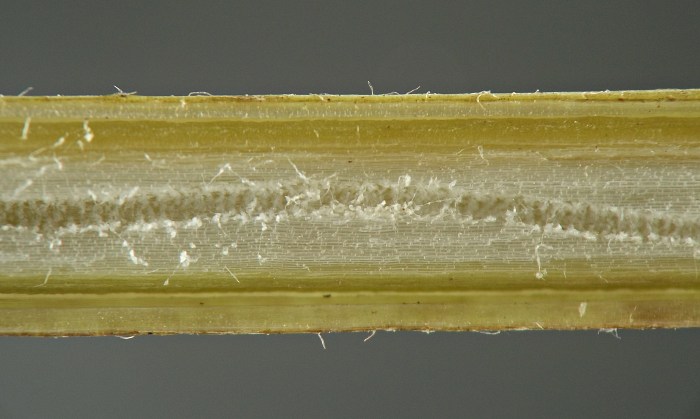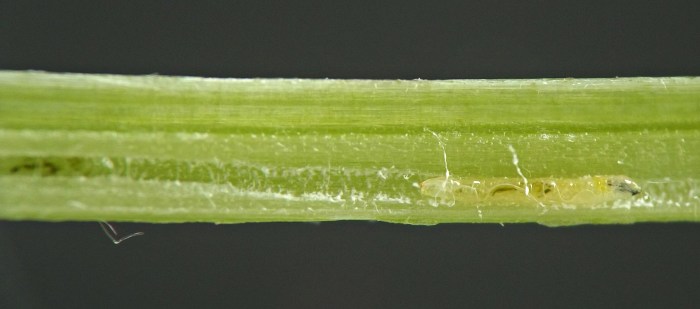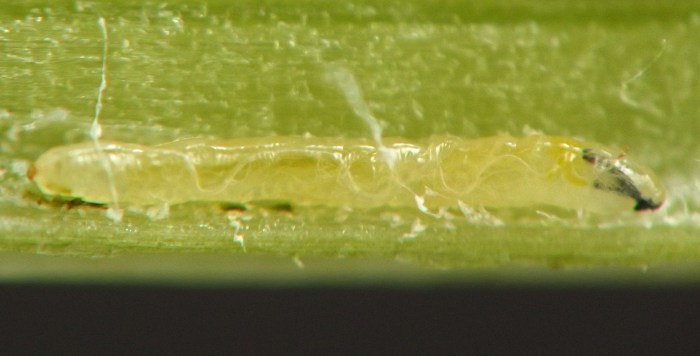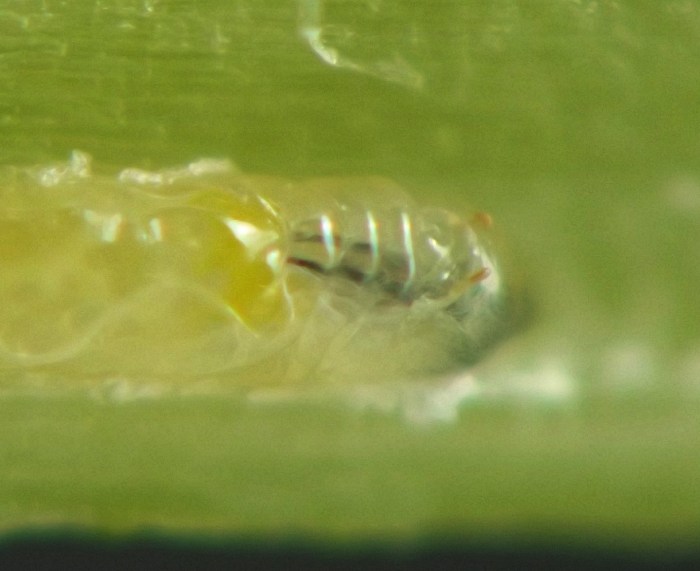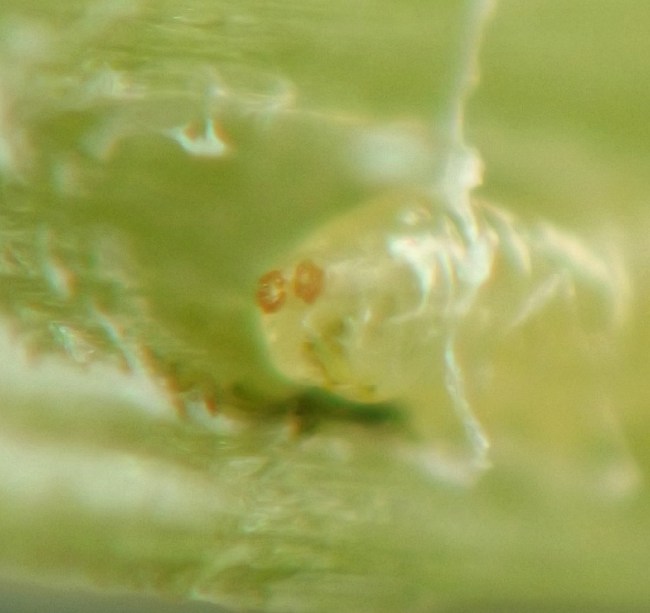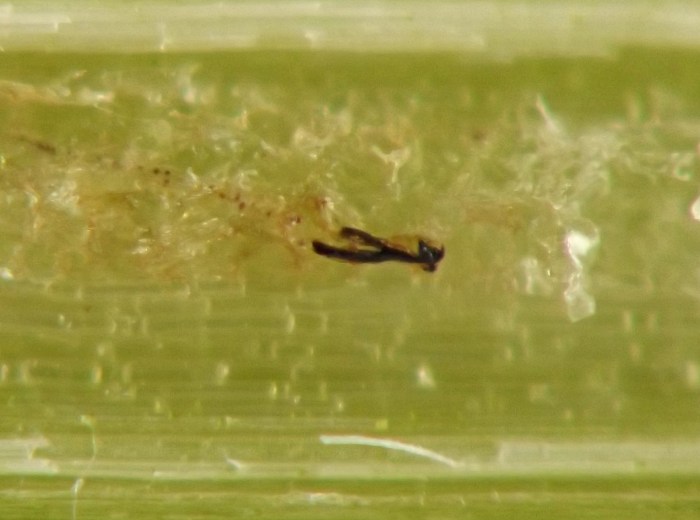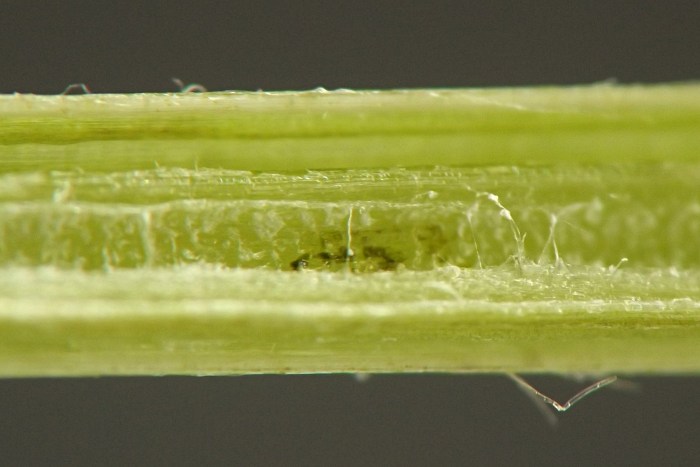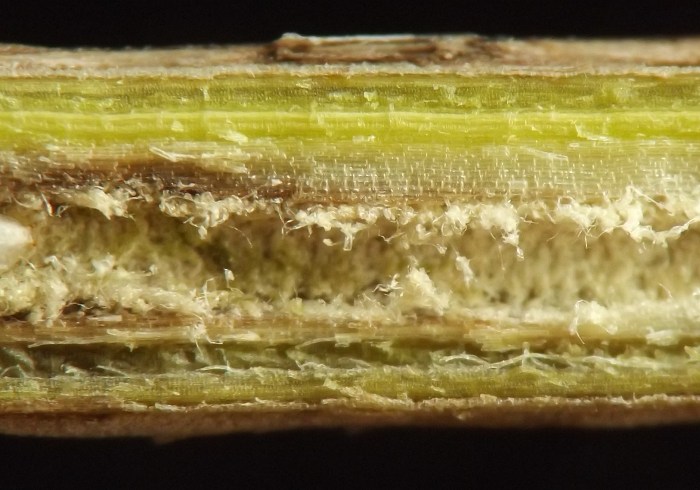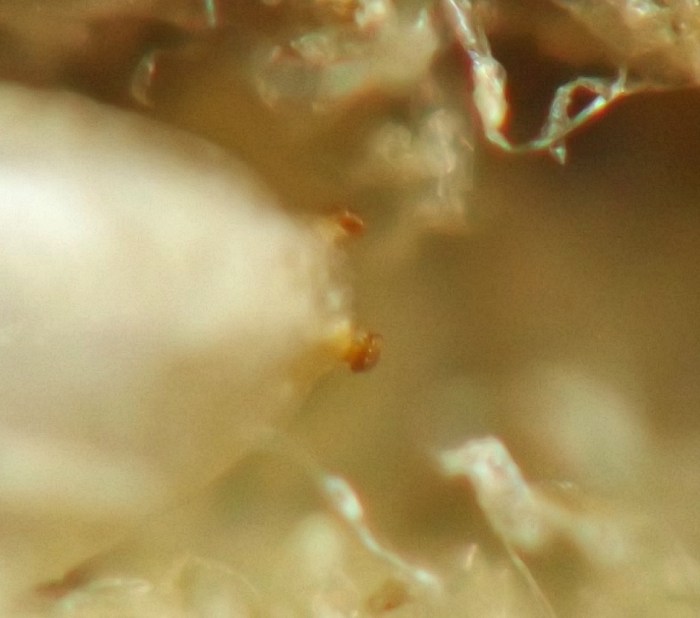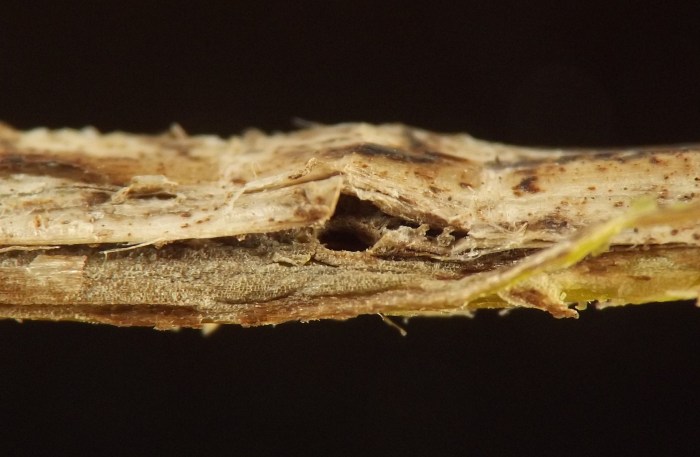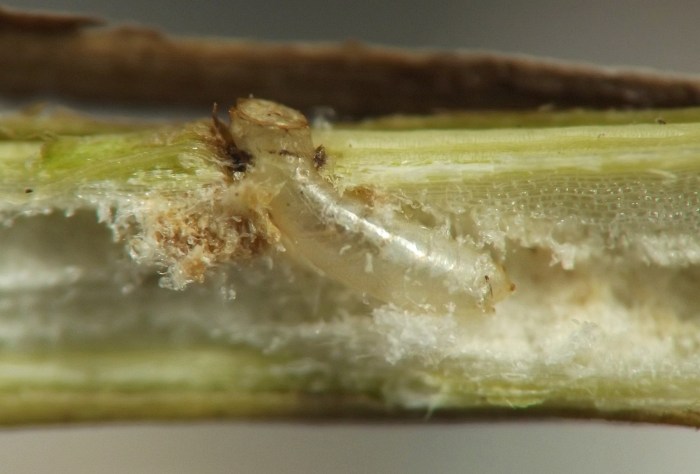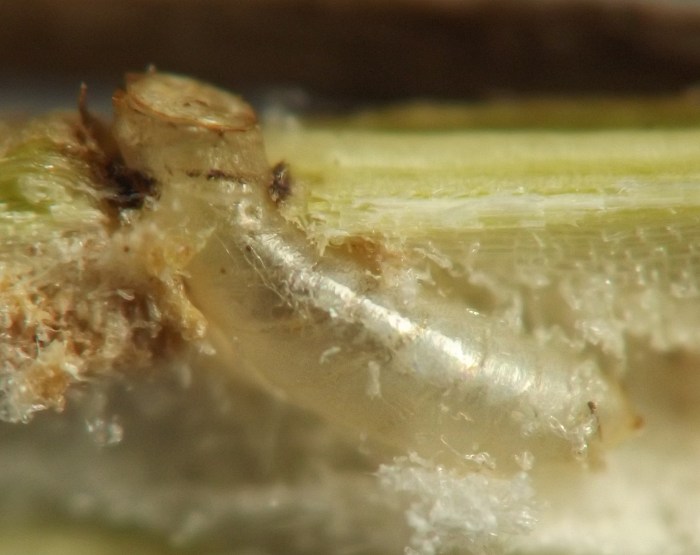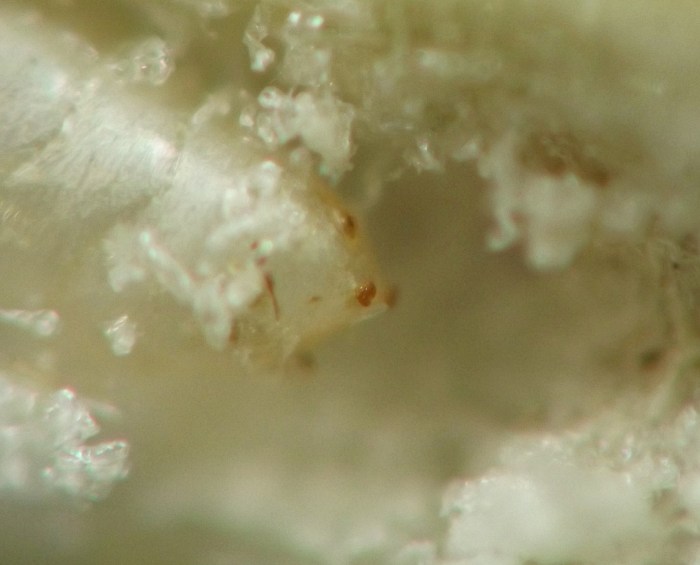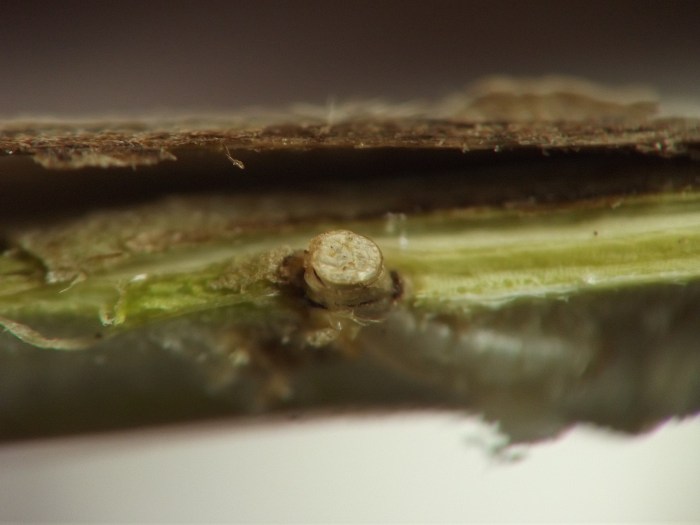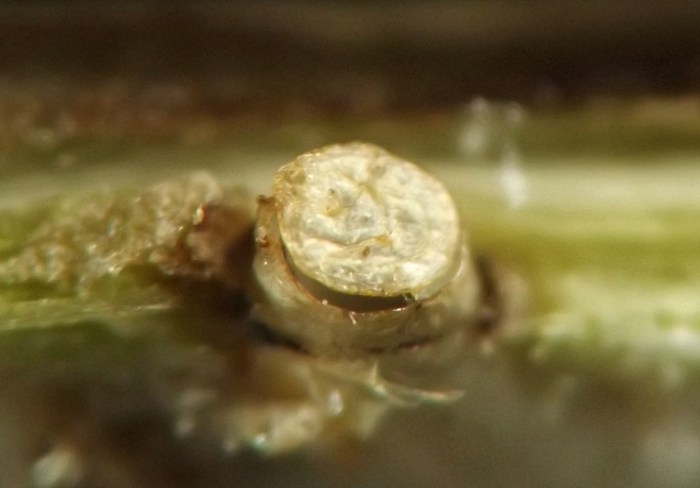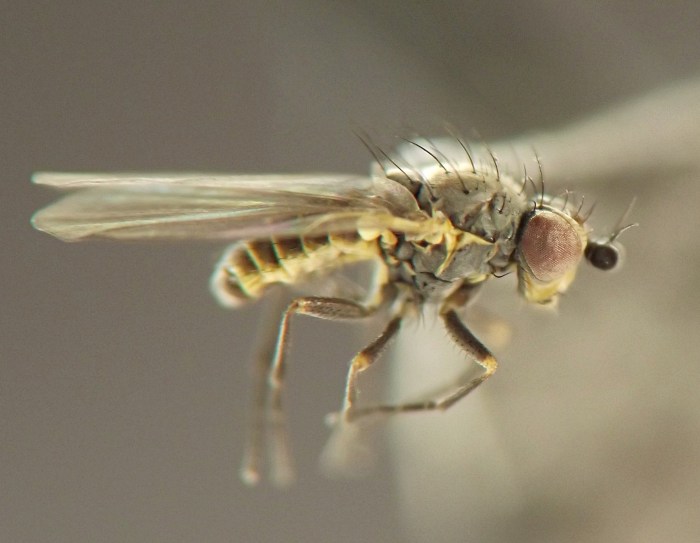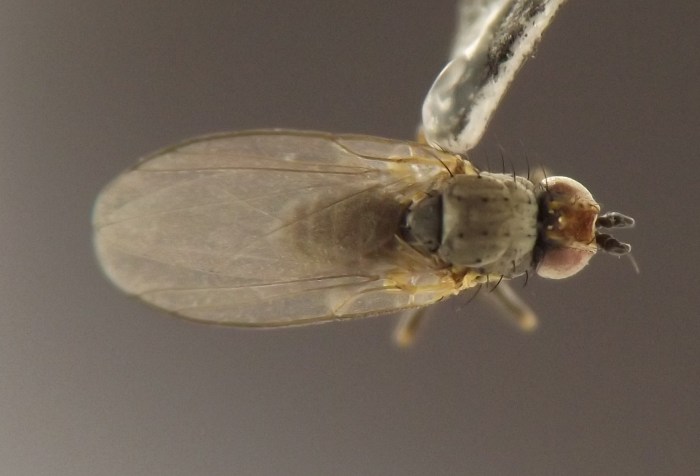Stem borer (Diptera: Agromyzidae) in Clematis [0159]
| Order | Diptera |
|---|---|
| Family | Agromyzidae[T,L,P,A] |
| Lower taxon | Phytomyzinae |
| No. spp. involved | One confirmed |
| Feeding mode | Stem borer |
| Host plant | Clematis virginiana (Ranunculaceae) |
The larva of this borer forms an elongate tunnel in the pith of the stem. Rather than concentrating its feeding in a localized area within the stem, this species travels for a long distance along the main axis of the stem until it completes its development, its tunnel usually spanning multiple internodes. When it is finished feeding, usually somewhere along the length of an internode, it establishes a short, curving tunnel outward to just under the bark of the stem. It cuts an exit slit or window in the bark that remains closed for the time being. The larva then pupates in the curved tunnel, the puparium taking on the arching shape of the tunnel in a manner unusual among the stem agromyzids examined in the current study. Also unusual for a stem agromyzid, the anterior end of the puparium is modified into a peculiar, flat, circular "lid" that remains appressed to the underside of the bark until the adult emerges, at which point the "lid" (along with the exit window in the bark) pops open. The anterior spiracles of the puparium arise from the main body of the puparium, projecting from the rim where the "lid" attaches.
A single male adult was reared in spring 2023.

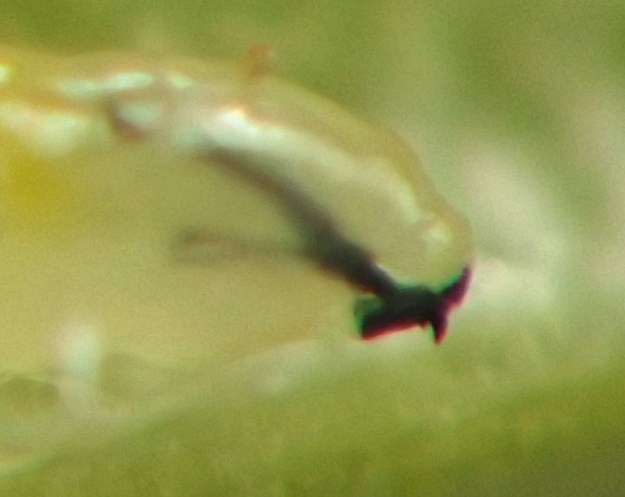
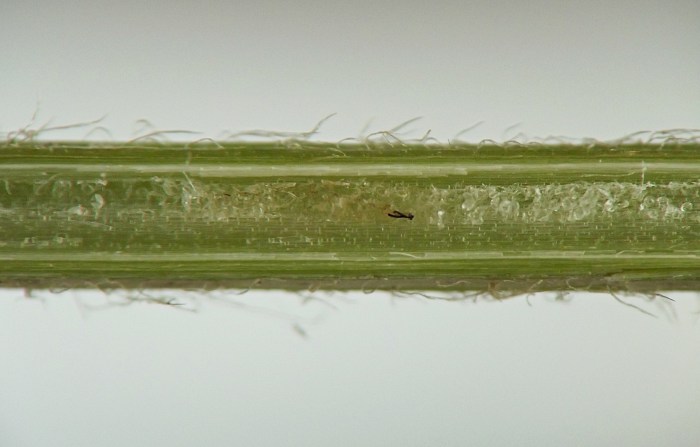
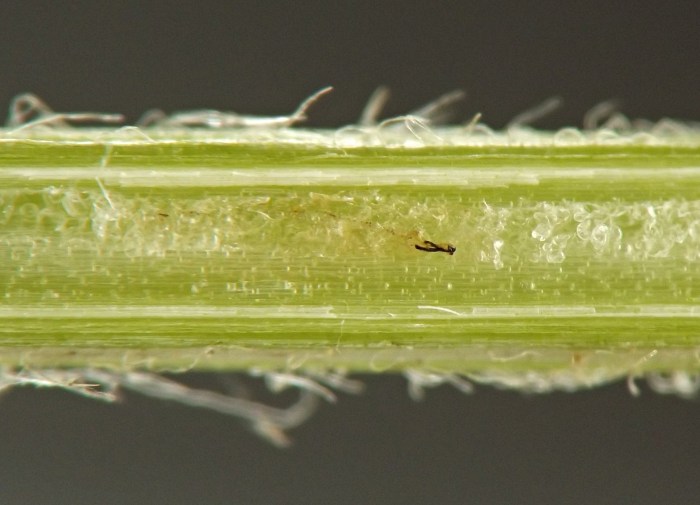
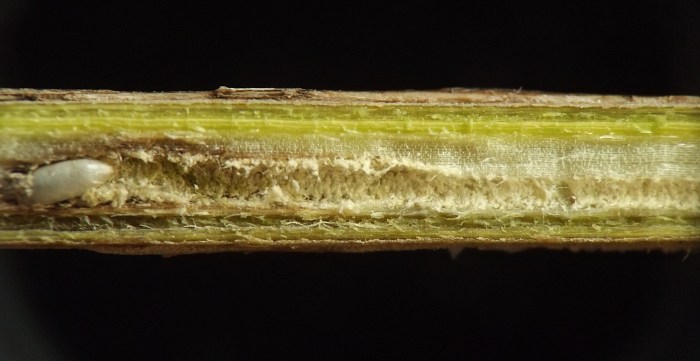
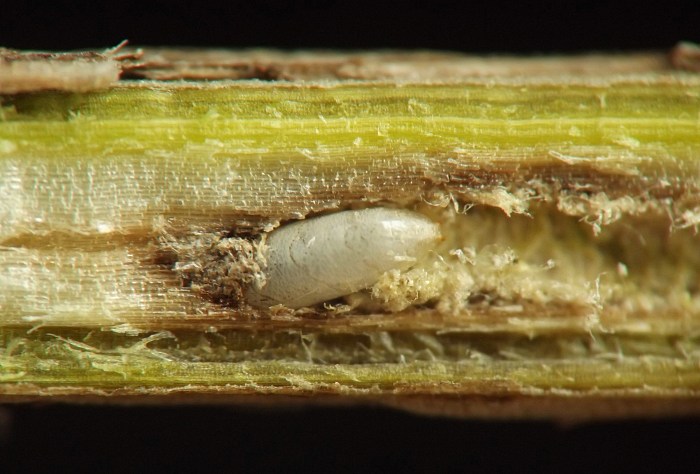
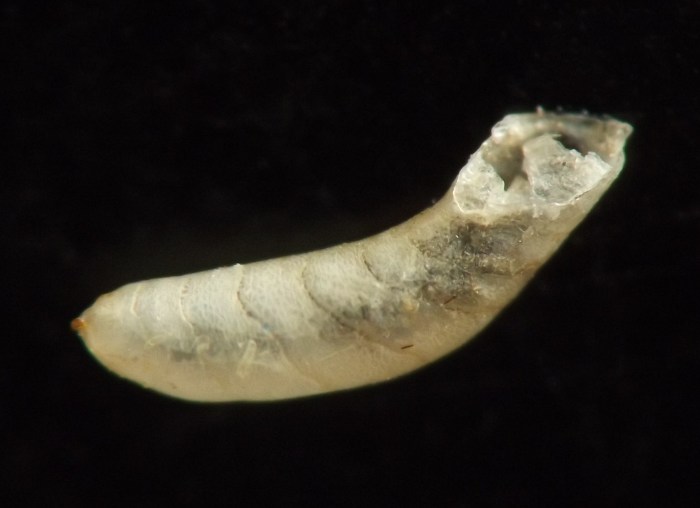
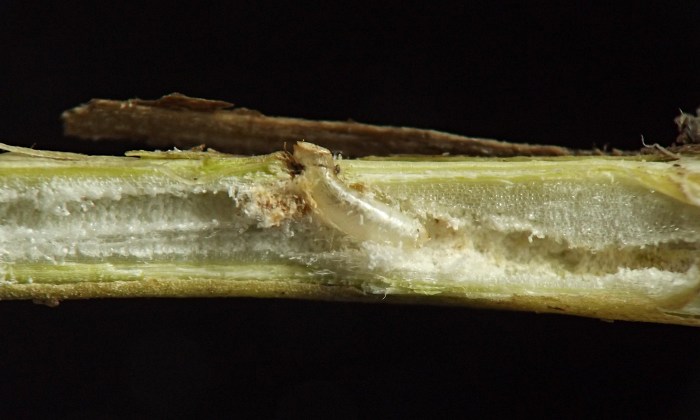
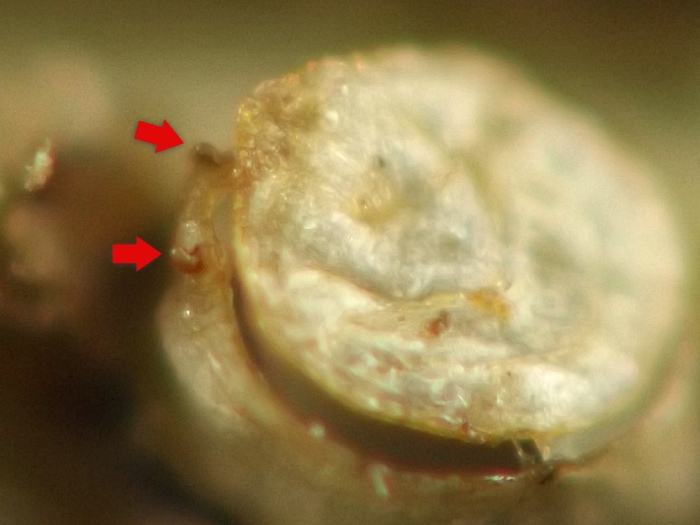
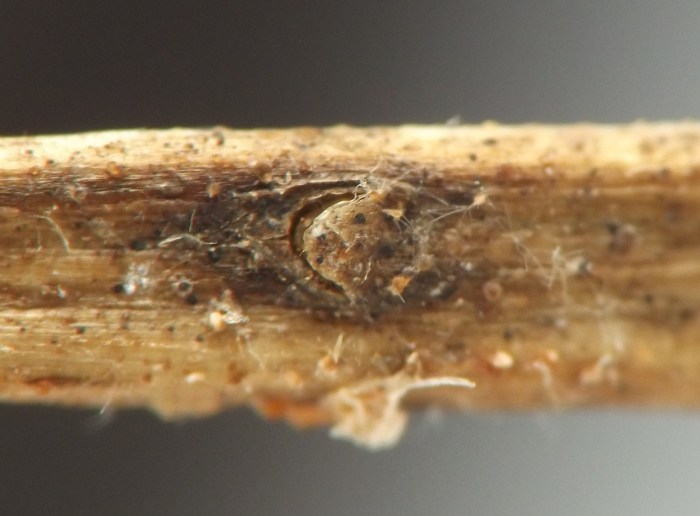

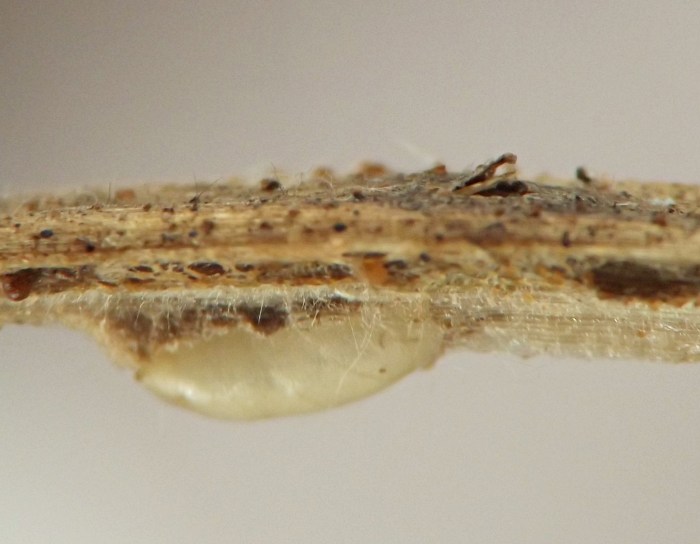
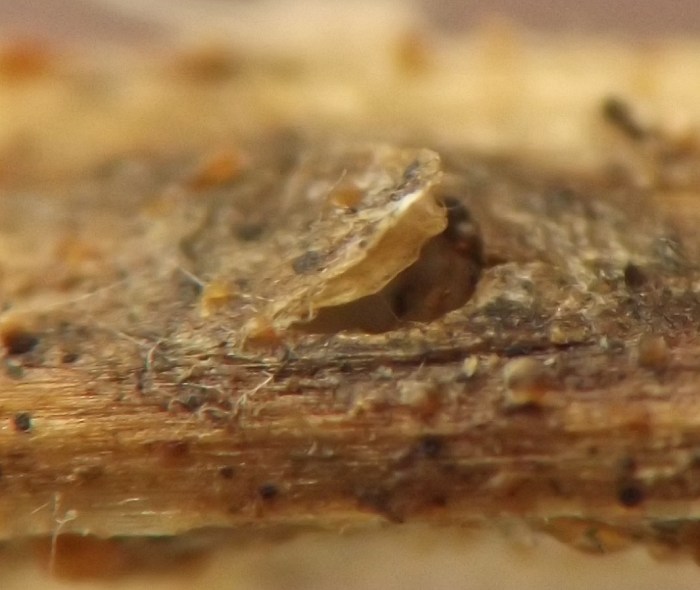
References
[none]
Page created 10/16/23. Last update: 09/09/24
